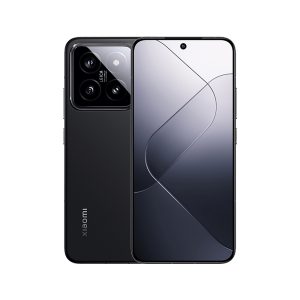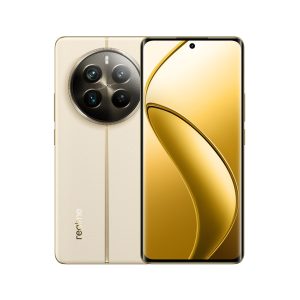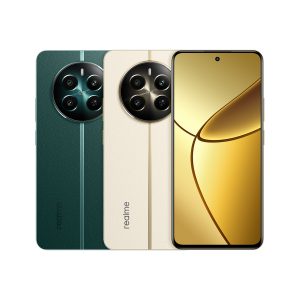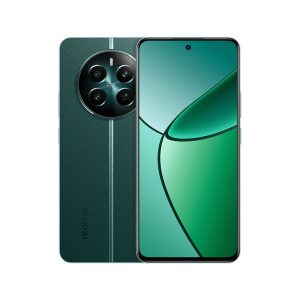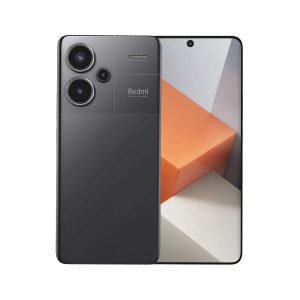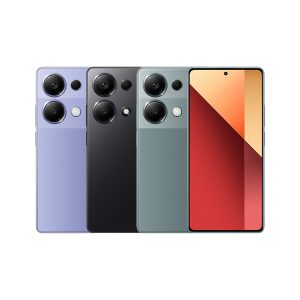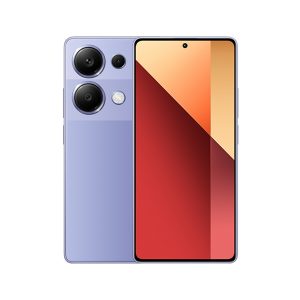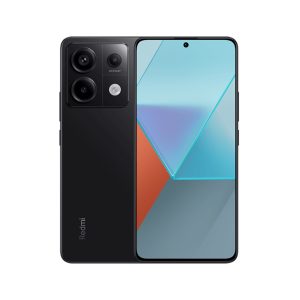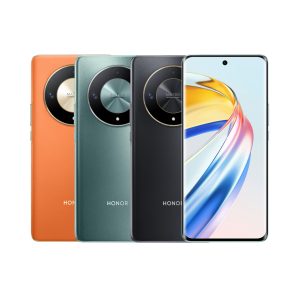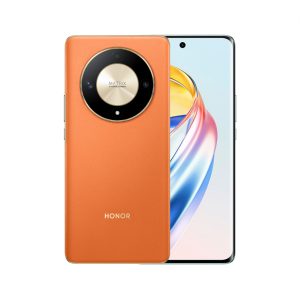Vivo V30 Pro 5G
The Vivo V30 Pro marks the introduction of Zeiss camera tuning to the V-series, a privilege previously exclusive to the high-end X-series. Here's a first look at this new smartphone and its key features.
This smartphone has four 50MP cameras, including a main, an ultrawide, a 2x telephoto portrait at the rear, and a selfie camera at the front. The collaboration with Zeiss enhances the camera experience quite a lot, introducing multiple tuning aspects. Among these is the ‘Zeiss Natural’ colour profile that stands out within the camera app, as it renders pleasingly natural colours. But, the real highlight of the V30 Pro's camera suite is the Zeiss signature portrait effects, which enhance portrait photos with an artistic flair, especially in low-light conditions. Complementing this feature, the device sports an enlarged, square-shaped Aura Light, significantly improving the quality of low-light portraits to achieve studio-like results. It’s super slick it’s just 7.45mm thick despite having a large 5,000mAh battery. That being said, the device's frame is constructed from plastic, a detail that contrasts with its otherwise premium build. Up front, the Vivo V30 Pro has a curved 6.78-inch AMOLED display with a refresh rate of 120Hz. It is brighter than the V29 Pro thanks to its 1200 nits typical brightness and 2800 nits peak brightness. Powering the Vivo V30 Pro is the MediaTek Dimensity 8200 chipset, paired with up to 12GB of RAM to ensure a seamless daily performance. Although the Dimensity 8200 is an older processor, it remains highly capable, offering performance on par with the Snapdragon 8 Gen 1. The device also has a 3002 mm2 vapour chamber to keep it cool during extended filming sessions. Additionally, as previously mentioned, it features a substantial 5,000mAh battery, complemented by 80W fast charging capabilities.Tecno Pova 6 Pro 5G
The TECNO Pova 6 Pro builds upon the design cues of its what came before. The TECNO Pova 6 Pro features a 6.78-inch FHD+ AMOLED display that gets a dynamic refresh rate users can adjust between 60, 90, and 120Hz but for the most part we kept it in Auto-Switch mode for better battery efficiency. It also gets a touch sampling rate of 1500Hz and a peak brightness of 1300 nits (just make sure to toggle High Brightness Mode if you plan to use it outdoors.)
For optics, the TECNO Pova 6 Pro features a triple camera setup at the rear headlined by a 108MP main sensor that features Electronic Image Stabilization, followed by a 2MP depth sensor, and a third Ai camera sensor that features the dynamic lighting around it, and also provides additional depth information.
In front, it features a 32MP camera sensor, and what we really like about this selfie camera is the sneaky front LED flash hidden within the top right corner of the display’s bezel.
Either way, any of the colorways will have a very chromed up aesthetic, so if users wanted a stealthier look, they would most likely just skin the phone or put on a case without a clear back.
But for the most part we like the rear panel of the TECNO Pova 6 Pro for it’s uniqueness.
Something new is, a part of the lighting can be found around one of the camera sensors, and both areas can be toggled On or Off with customizable animation patterns found in the settings menu.
Additionally, the rear is full of design motifs that highlight the Pova 6 Pro’s features like NFC, its 6,000 mAh battery and the number “6” to remind everyone that this is the sixth iteration in the series.
Up top is an infrared sensor for using the Pova 6 Pro as a universal remote, one out of two stereo speaker drivers, and a noise cancelling microphone.At the bottom of the phone is a 3.5mm audio jack, another noise-cancelling microphone, a USB Type-C port for charging and wired data transfers, and a second speaker grille that features two out of two stereo drivers.
Vivo V30 5G
The Vivo V30 5G is the slimmest phone powered by a 5,000mAh battery in the market to date. Boasting a 6.78-inch curved AMOLED display with Schott Alpha glass protection, the V30 is a modern, minimal beauty. This phone is powered by a Snapdragon 7 Gen 3 chipset, so it is no pushover, performance-wise.
The phone’s Aura Light ring is hard to ignore, giving end users plenty of opportunities to have studio-esque shoots on-the-go. This setup consists of a 50MP main sensor (f/1.9) and a 50MP ultrawide lens (f/2.0). In front, the V30 sports a 50MP punch-hole selfie shooter (f/2.0). It can also shoot videos at the same resolutions as the rear cameras, but with the absence of gyro-EIS support.
Among its many uses are portrait shots, food photography, and even vlogs with the V30’s micro movie mode. Moving on, it’s pleasantly thin at 7.45mm and easy to carry around. The V30 already has points in ergonomics for how comfortable it is to hold. After all, it’s marketed as the lightest phone with a 5,000mAh battery.
At the bottom, we have a USB Type-C port, a single downward-firing speaker grille, and a dual nano-SIM card slot.
The V30 has a 6.78-inch 2K curved AMOLED display (2800 x 1260, 20:9 aspect ratio) that supports HDR 10+, and is protected by Schott Alpha glass. This phone also has an 89.9 percent screen-to-body ratio and a pixel density of 453 pixels per inch (ppi). Xiaomi 14 5G
The Xiaomi 14, Highlighted by the Snapdragon 8 Gen 3 chipset, the Xiaomi 14 boasts significant RAM and storage options, along with impressive display brightness and charging speeds. Actual performance will be assessed through testing.
Its design maintains a premium feel with a flat screen, curved back, and rectangular camera island. Available colors include Black, White with the latter offering a fresh aesthetic.
Featuring a 6.36-inch AMOLED screen with high brightness and a dynamic refresh rate, the display aims to offer a stellar visual experience even in bright conditions.
Equipped with Leica-branded camera systems, the Xiaomi 14 series introduces features like LightFusion 900 image sensor and redesigned ultrawide and telephoto lenses. Powered by the Snapdragon 8 Gen 3, early benchmarks indicate strong performance, supported by ample RAM and storage configurations.
Transitioning from MIUI to HyperOS, the device runs Android 14 with integrated AI features like AI Subtitles, AI Album Search, and Xiaomi HyperMind for enhanced user experience.
With a 4,610mAh battery and fast charging capabilities, the Xiaomi 14 aims to provide a reliable battery life with quick recharge times.
Realme 12 Pro Plus 5G
The Realme 12 Pro Plus 5G is realme’s ultra-premium flagship offering, packing a powerful Qualcomm Snapdragon 7+ Gen 2 processor, a large 6.7-inch 120Hz curved OLED display, and an incredible 64MP Periscope Portrait camera system with 3x optical zoom.
For imaging, the device has a 64MP Periscope Portrait camera which uses an Omnivision 64B sensor with OIS. It offers an incredible 3x optical zoom, 6x in-sensor zoom, and up to 120x super zoom for capturing distant subjects. There’s also a 50MP Sony IMX890 main camera with OIS and an 8MP 112-degree ultra-wide camera to provide excellent versatility in various shooting conditions.
Under the hood, the Snapdragon 7s Gen 2 processor delivers excellent performance with 5G connectivity. The phone has 12GB of RAM which can further be expanded with 12GB dynamic RAM expansion. Storage tops out at a massive 512GB.
Realme 12 Plus 5G
The Realme 12+ 5G was co-designed with luxury watch designer Ollivier Savéo. For context (if you’re like me who doesn’t know who he is), Ollivier has worked with Swiss watch brands Rolex. So, you can expect to get a sweet-looking phone, and I must say, it is a beauty. You can see the sensors and the flash on top of them. At first glance, you may mistake it to pack a quad-camera setup, but in reality, we only get three sensors.
We get a USB Type-C port for charging and data transfers, a dual nano-SIM card tray, and one of the dual stereo speakers at the bottom. Situated on the right side are its volume rocker and power button, and up top, we have another speaker and a 3.5mm audio jack. That is not a common sight these days. Moving on, the realme 12+ sports a 6.67-inch FHD+ AMOLED display with up to 120Hz refresh rate and a 92.65% screen-to-body ratio.
For cameras, we have a triple rear camera setup at the back comprised of a 50MP SonyLYT600 main sensor with an aperture of f/1.88, an 8MP 112 degree Wide Angle camera with an aperture of f/2.2 and lastly we have a 2MP macro sensor. Up front, we get a 16MP selfie camera.
On the software front, out of the box, we get realme UI 50 based on Android 14.
The realme 12+ is powered by the MediaTek Dimensity 7050 chipset that is coupled with its octa-core CPU clocking up to 2.6GHz and an ARM Mali-G68 MC4 GPU. You also have 12GB of RAM and 256GB of internal storage, but there is an 8GB variant. RAM can be extended up to 12GB, giving you 24GB of total RAM thanks to Dynamic RAM Extension. A microSD card of up to 2TB can be inserted for more storage.
Oppo Reno 11 Pro 5G
The Oppo Reno 11 Pro 5G comes with a 6.74-inch OLED display that will have a resolution of 1240 x 2772 pixels, 20:9 aspect ratio, and an 90.3% screen-to-body ratio. Hence, you will enjoy playing games and watching videos with crystal clear.
Oppo Reno 11 Pro 5G is equipped with an Octa-core Qualcomm SM8475 Snapdragon 8+ Gen 1 (4 nm) processor that lets you enjoy a faster and lag-free performance.
It comes with various memory variations, up to 512GB and 12GB RAM, you will easily store your local files, videos, pictures, movies, songs, and other stuff without worrying about space constraints.
The phone features a triple camera setup on the rear that gives rich colored and life-like pictures with every click. There is a 50MP primary camera, a 32MP telephoto camera, and an 8MP ultra-wide camera.
On the front, the phone has a 32MP camera for taking selfies and making video calls.
Oppo Reno 11 Pro 5G runs ColorOS 14 based on the Android 14 operating system, giving you a clutter-free user interface.
It is powered by a Li-Po 4700 mAh non-removable battery that supports 80W proprietary fast charging. You need not worry about battery drainage in the middle of a call, playing a game, watching a video, listening to music, and doing other things.
Oppo Reno 11 5G
The Reno 11 5G comes with a MediaTek Dimensity 7050 with 12GB RAM and 256GB. It has the same 6.7-inch Full HD+ AMOLED curved display with up to 120Hz refresh rate. It’s also got HDR10+ support and dual stereo speakers, but only has a peak brightness of 950 nits.
Powering the device is a Mediatek Dimensity 7050 – a chipset announced back in May 2023. It’s got an octa-core CPU which consists of two ARM Cortex-A78 that’s clocked at 2.6GHz with six ARM Cortex-A55 that has a max speed of 2.0GHz. It uses an ARM Mali-G68 MC4 for its GPU.
Moving on to cameras, the OPPO Reno11 comes with a triple-rear camera setup that features a 50MP Sony LYT600 sensor with an aperture of f/1.8, PDAF and optical image stabilization. Along with this is a 32MP telephoto camera with an f/2.0 aperture, and an 8MP Sony IMX355 ultrawide lens with an aperture of f/2.2. For the selfie camera, it uses a 32MP OmniVision OV32C front-facing shooter with an aperture of f/2.4.
The OPPO Reno 11 5G runs on a 5,000mAh battery and comes with 67W SUPERVOOC support. It took about an hour and a couple of minutes to charge the device from 20% to a fully charged 100%.
Xiaomi Redmi Note 13 Pro+ 5G
The Redmi Note 13 Pro+ 5G, shares a similar 6.7-inch OLED screen and MIUI software as the rest, it stands out with a much faster chip, insane 120W fast charging, beautiful design and a few other notable features.
Other attractions of the Redmi Note 13 Pro+ include an upgraded 200MP primary camera with OIS (optical image stabilization), MediaTek’s 4nm-based Dimensity 7200 Ultra SoC, an IP68 rating for dust and water resistance, up to 12GB of LPDDR5 RAM, and 512GB of UFS 3.1 storage.
Speaking of the display, the 6.67-inch AMOLED screen offers a sharp viewing experience with 1.5K resolution (2,712 x 1,220 pixels) and up to 1800 nits peak brightness. There’s also support for HDR10+ and Dolby Vision for an immersive movie viewing experience. Xiaomi is taking cues from its competitors and maintaining a high PWM dimming to up to 1,920Hz for a reduced flicker on the screen. The display also offers 120Hz refresh rate for a smooth gaming and scrolling experience.
While there’s no Leica partnership in Xiaomi’s mid-range (yet), the Redmi Note 13 Pro+ includes an upgraded 200MP primary camera. For instance, it now utilizes an ISOCELL HP3 sensor (the previous being the ISOCELL HPX sensor), which captures sharper details and more light. As a result, when you zoom in, photos captured in 200MP mode exhibit clearer details, less noise, and more readable text at a distance. Naturally, the file size also increases when you click photos in this mode.
Xiaomi Redmi Note 13 Pro 4G
This particular review is for the middle child in this family of five, the Redmi Note 13 Pro 4G. Notice the lack of 5G in the name and in the feature set, but also notice that this is a "Pro" phone. For this particular series, the Pro series indicates an improved 200MP main camera sensor and a faster chip inside the phone.
As for all the rest, the Redmi Note 13 Pro is a big phone with a 6.7-inch 120Hz OLED screen and it also has a 5,000mAh battery, just like all five phones in the series.
Xiaomi Redmi Note 13 Pro 5G
The Xiaomi Redmi Note 13 Pro 5G is the second best in this family of five. It bets on a capable 200MP main camera, a zippy Snapdragon 7s Gen 2 processor, and a big and sharp 6.7-inch display.
Speaking of the 6.7-inch size, this is part of the common DNA in the Redmi Note 13 series, and others include fast charging and, of course, the MIUI software.
Honor X9b 5G
HONOR started the new year with a bang, introducing the second-generation HONOR X9b 5G as the “toughest phone” in their 2024 lineup. Now available for purchase today, the HONOR X9b 5G is well-known for its build and durability, but there’s so much more to it!
The HONOR X9b also gets a new refined design, featuring a knurled-edge circular camera module here at the rear, that showcases the triple-camera array. It has sports a slightly curved 6.78-inch FHD+ (2652 x 1220) AMOLED display, that features a 120Hz refresh rate and a peak brightness of 1200 nits.
Color reproduction looks great with 100% DCI-P3 coverage. Making playing games, streaming movies and watching videos on social media a visual treat for the eyes. It’s 120Hz refresh rate paired with it’s mostly-stutter free software experience make UI animations look smooth.
Headlining the show is a 108MP main camera sensor with an aperture of f/1.8 and features PDAF (Phase Detection Auto Focus), followed by a 5MP (f/2.2) ultrawide and a 2MP macro sensor.
In the punch-hole display resides its 16MP selfie shooter that features an aperture of f/2.5.
The HONOR X9b 5G runs on MagicOS 7.2 based off Android 13 out of the box. MagicOS feels like a more global-friendly HarmonyOS with easy access to Google Play services and RCS support.








